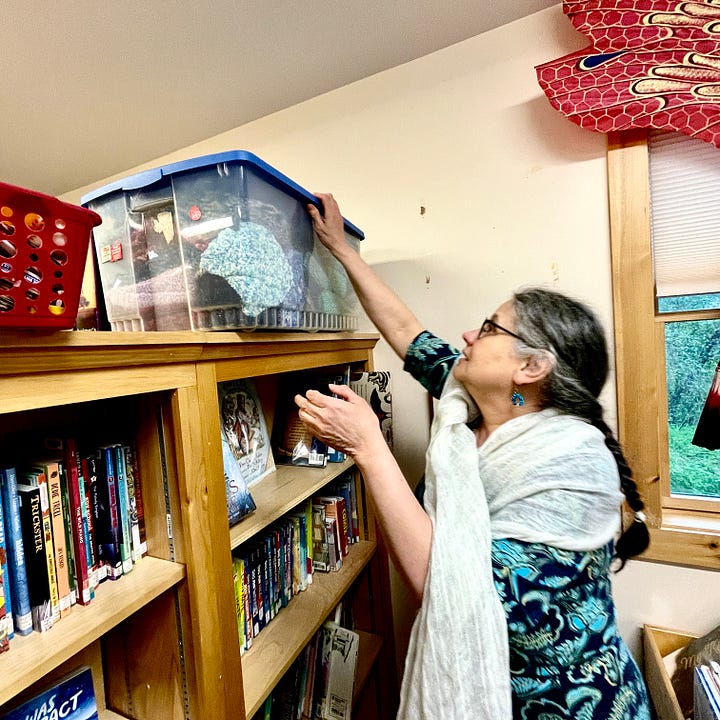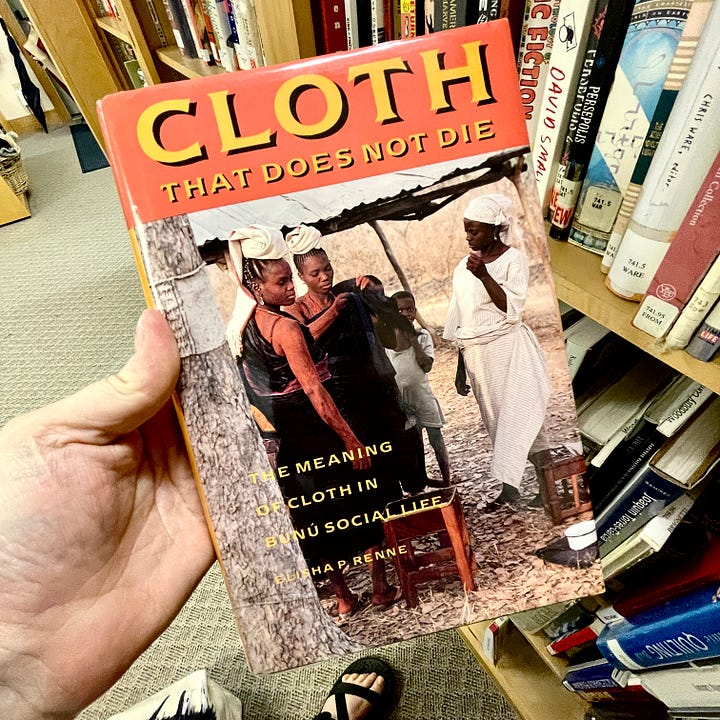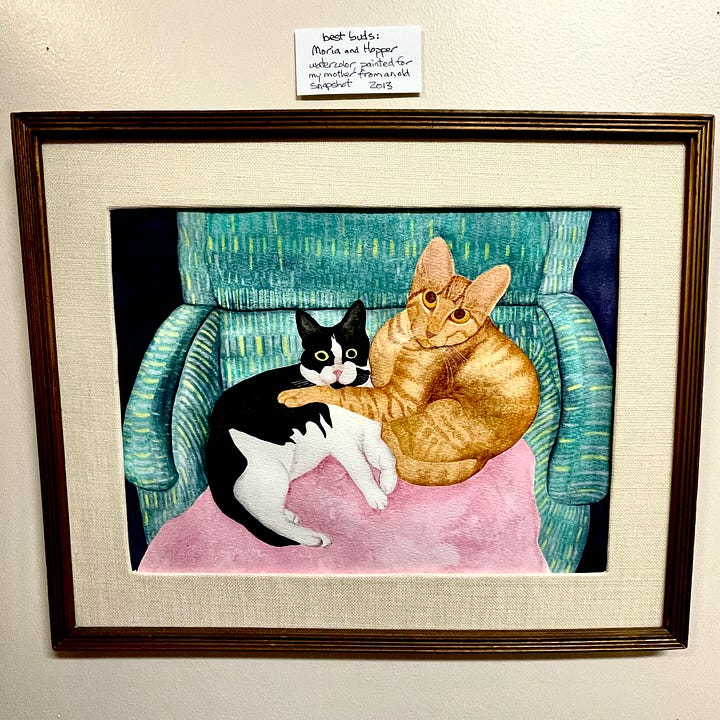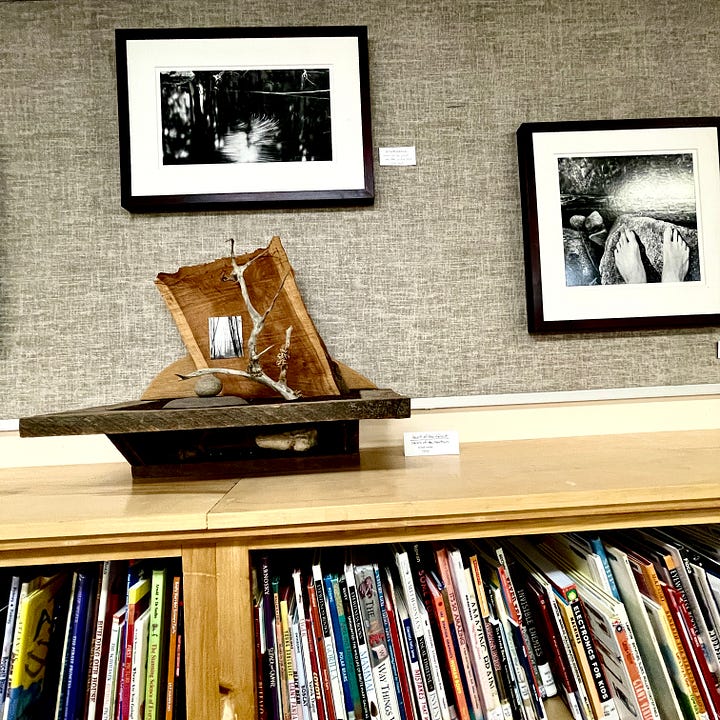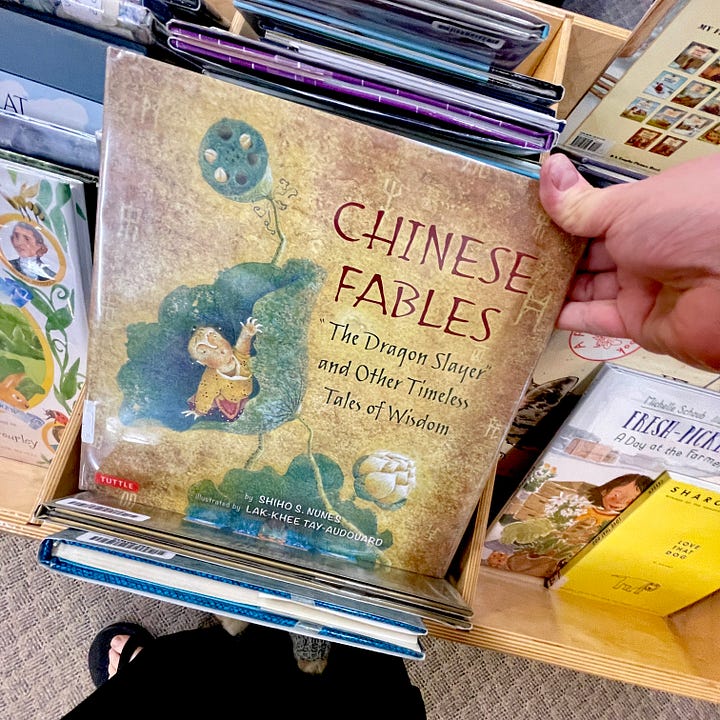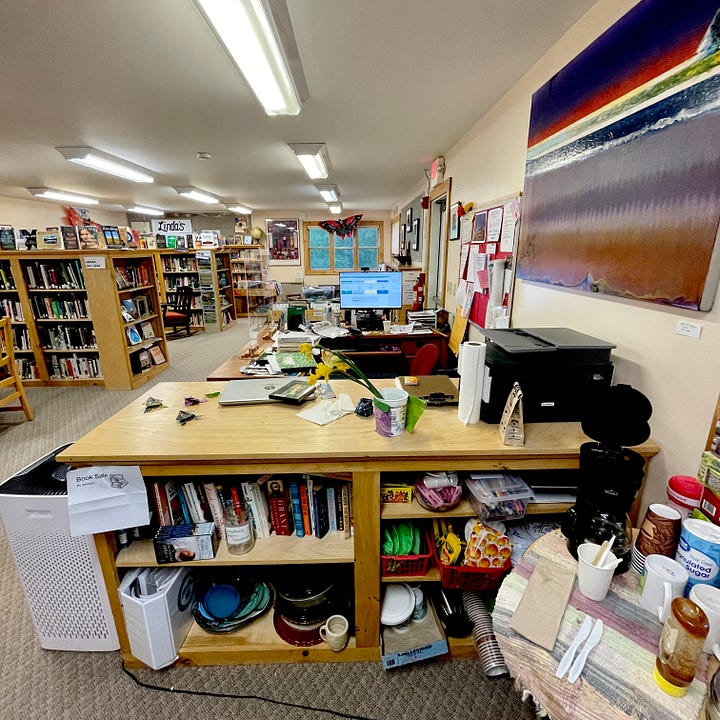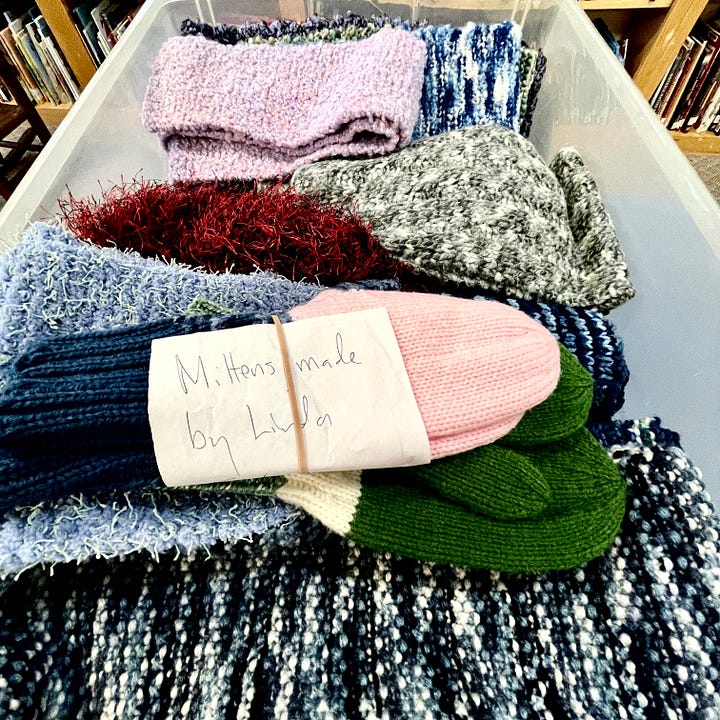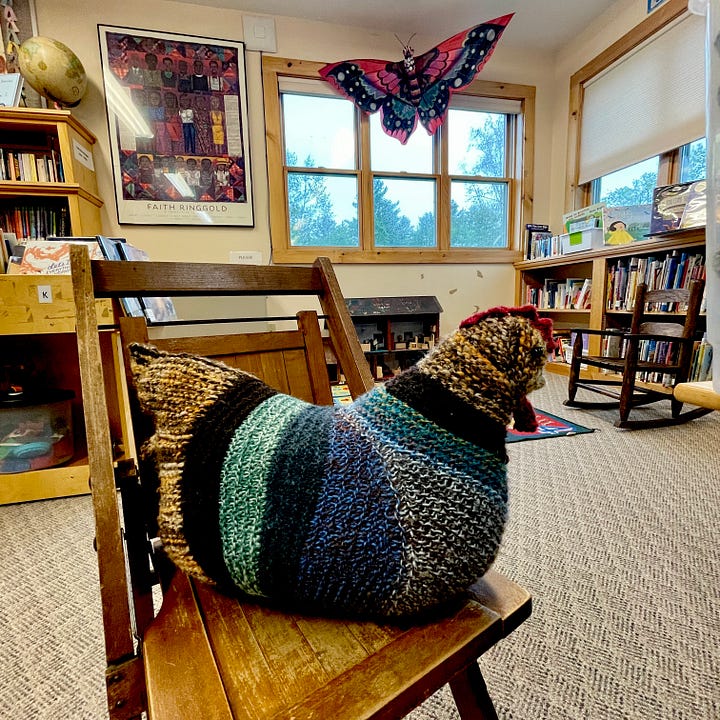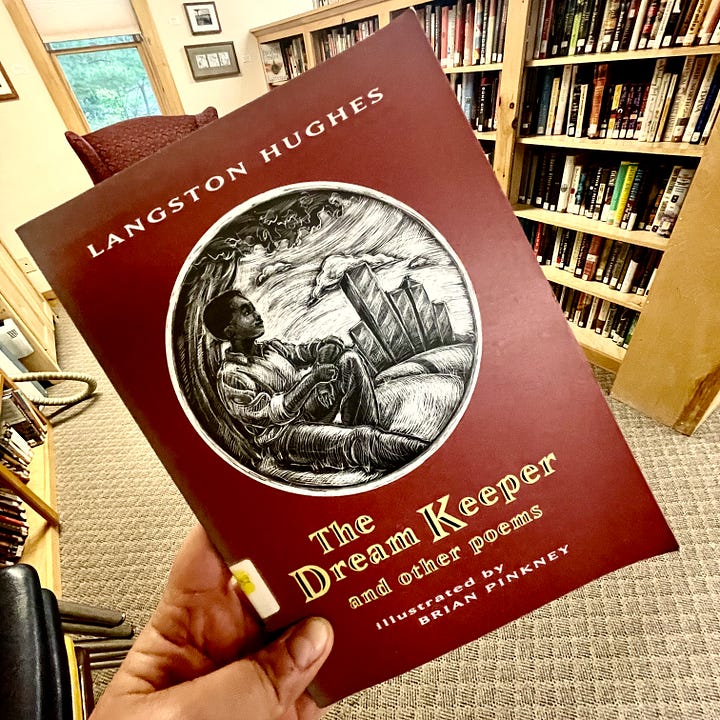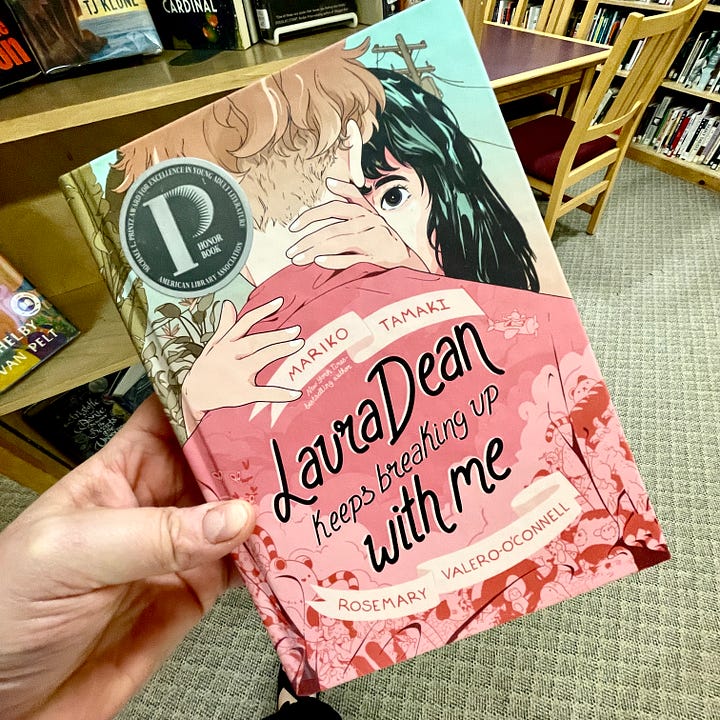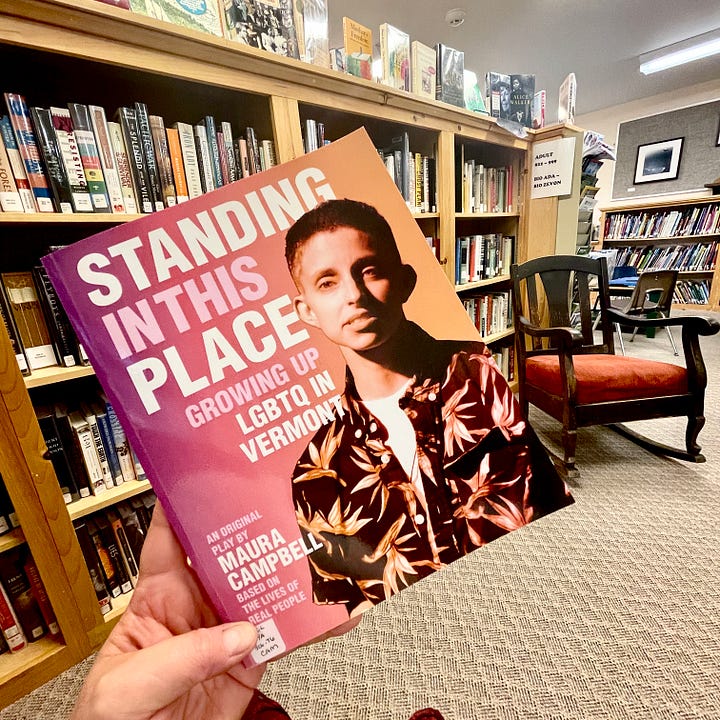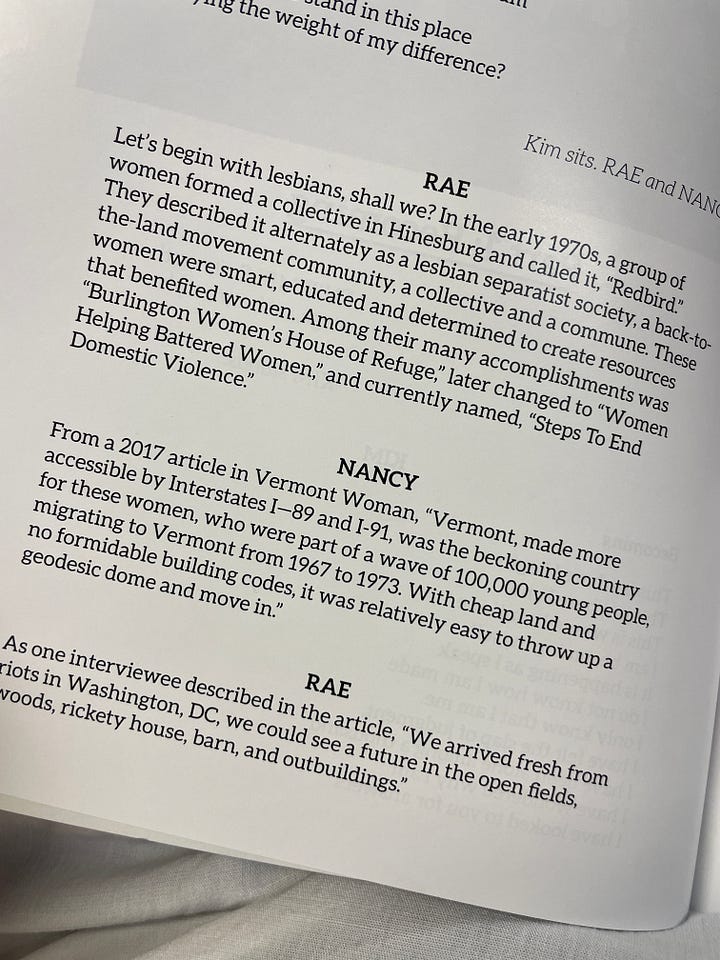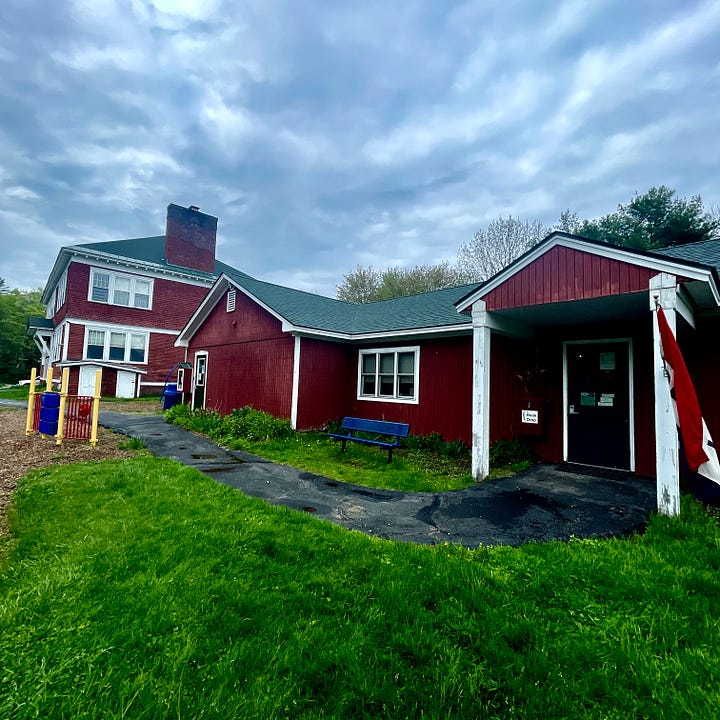Library 76! The Woodbury Community Library was the 76th stop on my quest to read, write, and knit in as many of Vermont’s public libraries as I can during my sabbatical.
I read: a screenplay called Standing in This Place: Growing up LGBTQ+ in Vermont by playwright Laura Campbell
I wrote: an abstract to a research paper
I knit: a Lindal Sweater by Ona Woldten
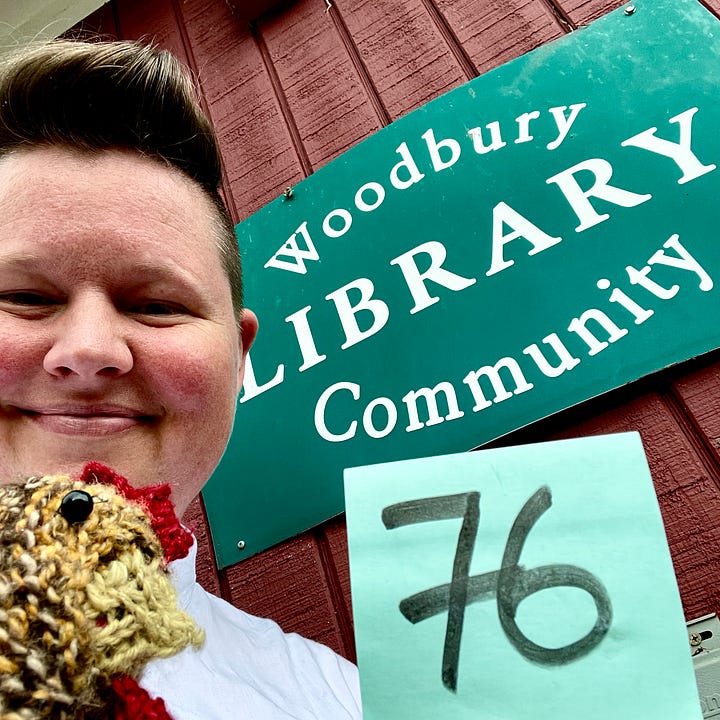



Something that is important to know about me is that I spend quite a bit of time walking around Vermont with a knitted chicken. This invites interesting things into my life.
On the path to and from this library, I walked past D, a stranger, who noticed the chicken. This followed:
D: Is that a chicken?
Me: Yes. This is my emotional support chicken, Hen Solo. I am on a quest to knit in—
D: I read about you!
Me: Oh yay!
D: I have something for you! [runs towards truck quickly]
Me: Oh yay! [follows D to truck. more quickly than normal]
D: [digs in truck for a while to fetch book]. Here you go!
Me: [Takes a moment to look a book]. Is this a book of poems you write about chickens that you are giving to me?!
D: Yes!
Me: Oh my god!
No longer strangers.
My mother (a writer) told me that one should never use exclamation marks behind anything other than a single word. I understand this writing-world advice. And also: Hogwash! Every line of that exchange needed exclamation points to accurately convey the intensity of the moment. It was intense!
D. Slayton Avery has written many books of poems. This one, “Chickenshift,” is a collection of poems about chickens crossing the road. My favorite is “Little Red Hen,” in which a chicken leaves home, is exposed to some ideas from afar, and comes back with a new name: “Chicken Mao.”
In the actual library, I met the director, a retired Spanish teacher. We drank tea together and talked about the change we’ve seen in K-12 schools in the last 30 years. She showed me a tub of knitted items that a former librarian Linda knit for future strangers to wear before she died.
Linda.
Knitting for strangers is a hopeful thing to do.
When I am in these libraries I like to notice the books librarians put on display. I pick a few up and read as many pages as I can in the time I am there. On this visit, the librarian recommended “Cloth that Does Not Die” by Elisha Renne, about the meaning of hand-made fabric in the Bunu Yoruba culture in Nigeria.
The title of this book was striking to me. Hand-knit items will outlive most of the knitters who knit them. I often think about this when I am knitting. I think about the person I am knitting for. I think about how the object will fit their head. Their hands. Their shoulders. Every stitch is made with an image of the recipient in my head.
Perhaps this is why that when I send knitted objects into the world, after spending maybe 20-120 hours thinking about the recipient, I create unreasonable expectations. I crave photos and updates. I crave notice of death, misplacement, destruction, or needed repairs.
That’s a reasonable amount of labor to ask from hand-knit gift receivers, right?
Not asking too much, right?
I wish I didn’t care so much about the lifespan of the hand-knits I send into the world, but in fact I think about them often and wonder how they’re doing. I wonder what makes them wearable or not. I wonder why they are chosen or not. I wonder if they are thrown away or if they are someone’s 3rd favorite hat.
Each item I send into the world is knitted with dreams.
Perhaps this is part of what makes knitting such a hopeful thing to do.

